Specifications and features
Announced towards the end of 2014, the Tamron SP 15-30mm F/2.8 Di VC USD is a competitively-priced, ultra-wide, full-frame, high-speed zoom targeting the traditional press market as well as landscape and architecture photographers. Like recent models from Tamron, it has several attractive features, including a silent sonic-type motor, optical image stabilization, and anti-ghosting nano-type (eBAND) and hydrophobic fluorine coatings. It also has a circular 9-bladed aperture to help with rendering rounded highlights and smoothing transitions to out-of-focus areas.
The optical formula consists of 16 elements arranged in 13 groups, with a mix of aspherical surfaces and LD glass to reduce various aberrations. With a built-in petal-shaped lens hood and no accessory thread, however, there is no provision for fitting filters — a potential downside for landscape photographers. The lens focuses to 11” (28cm), measures 3.87 x 5.63” (98.4 x 145mm), and weighs a not-insignificant 2.42 lb (1.1kg). It is available for around $1,199 (USD).
Specifications
- 18 elements arranged in 13 groups
- F2.8 constant aperture
- Sonic-type motor
- Aspheric surfaces
- LD glass
- 9x circular aperture blades
- 11” (28cm) minimum focus
Measurements: Good sharpness levels
With an overall score of 32 points on the demanding 50-Mpix sensor of the Canon EOS 5DS R and a sharpness score equivalent of 23 Mpix, the Tamron is an excellent performer optically for a lens like this. It has good sharpness levels generally, albeit with some astigmatism, notably at 15mm wide-open, but also at other focal lengths as well. There’s also some field curvature mid-zoom, but it’s not unexpected in an ultra-wide zoom like this. Control of chromatic aberration is excellent at 30mm and still good at 15mm; however ,it may be noticeable at times in the outer two-thirds of the image field.
Barrel distortion is inevitable, and while relatively high at 15mm, it avoids the difficult-to-correct complex (mustache) type. Typically, there’s a little pincushion from 24mm onwards, though distortion is negligible at 20mm. The relatively low vignetting and transmission ranging from T3.1-3.2 is also good.
Tamron SP 15-30mm f2.8 Di VC USD (A012) vs. Tokina AT-X 16-28 F2.8 PR FX
An ultra-wide high-speed zoom from Sigma is conspicuous by its absence, but rival maker Tokina offers a model with a similar range and maximum aperture. At around $849, it’s attractively priced, and on the Canon EOS 5DS R it performs quite well against the newer Tamron, particularly in terms of peak sharpness when stopped down. Unfortunately, it has significantly lower sharpness at F2.8-4 throughout the zoom range, which is unusually more noticeable at the shorter focal lengths.
The Tokina’s sharpness across the frame isn’t a match for the Tamron until f/5.6. Vignetting is low for a lens like this, but even then, it’s still not as low as the Tamron’s until it’s stopped down significantly.
In other regards, however, the Tokina performs well. Transmission is similar, ranging from T3.1-3.4, and the older rival even surpasses the new model in terms of much better control of distortion and chromatic aberration at the wider end.
Tamron SP 15-30mm F/2.8 Di VC USD (Model A012) Canon vs. Canon EF 16-35mm f/2.8L III USM vs. Canon EF 16-35mm f/4L IS USM
Now that Canon has updated its EF16-35mm F2.8L with a third-generation model, we can see just how good a performer the Tamron is. It even outperforms the highly-regarded EF 16-35mm F4 IS USM, though in truth, the overall score of 32 against 27 for the F4 is closer than the numbers suggest.
The Canon models excel in their performance at and close to the maximum aperture, where sharpness across the frame is excellent, except for the new EF16-35mm F2.8L III USM at 28mm where, somewhat surprisingly, its center sharpness dips beneath the other two.
Another surprise, given the $1,000 price tag, is its much higher vignetting and higher levels of chromatic aberration over the Tamron. Still, Canon continues to demonstrate its know-how in these two models, with lower distortion and very good transmission, regardless of the Tamron’s similar scores.
Conclusion
Now that we’ve tested the Tamron against two strong performers from Canon on the same body, we can see just how good the 15-30mm F2.8 is optically. Given the price, it has a good balance of sharpness even wide-open, along with good control of chromatic aberration.
On the flip side, it has some slight field curvature and astigmatism along with slightly higher levels of distortion. However, the Tamron avoids complex distortion, and thanks in part to its large convex front element, it has good control of vignetting. Although image stabilization adds to the size, weight, and complexity of the lens, given the overall performance and competitive pricing, it remains a tempting alternative to the own-brand models.


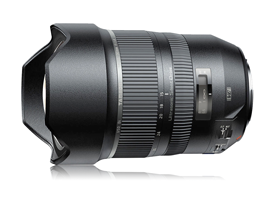


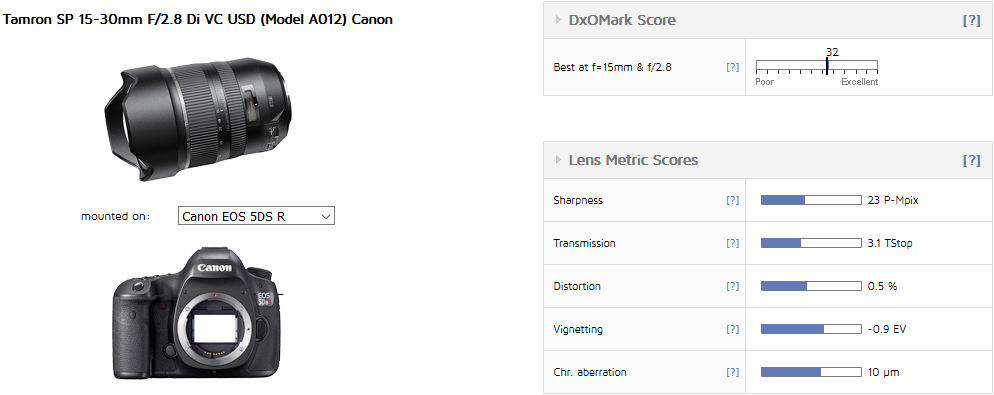

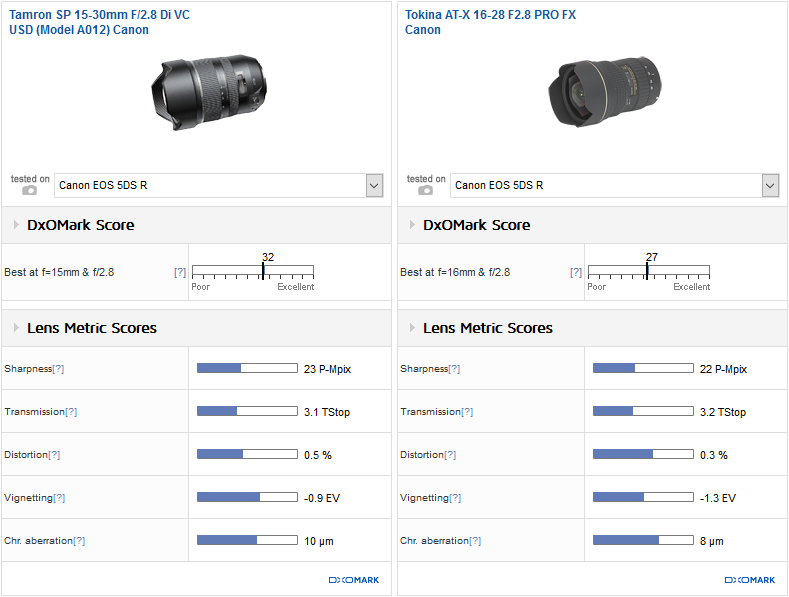
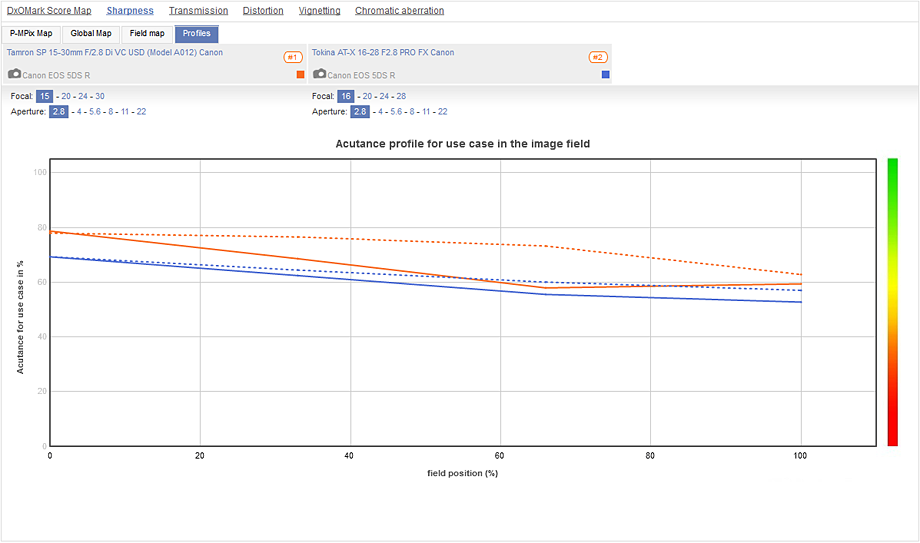
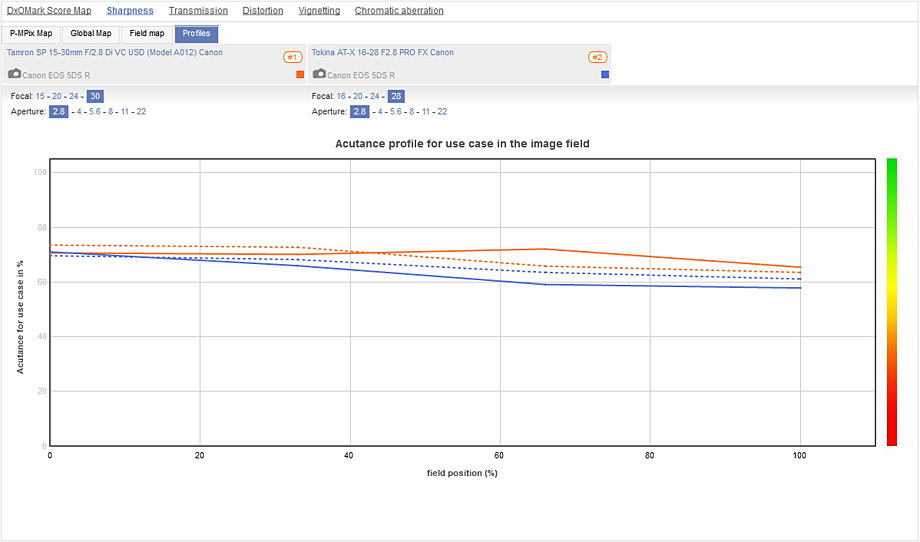
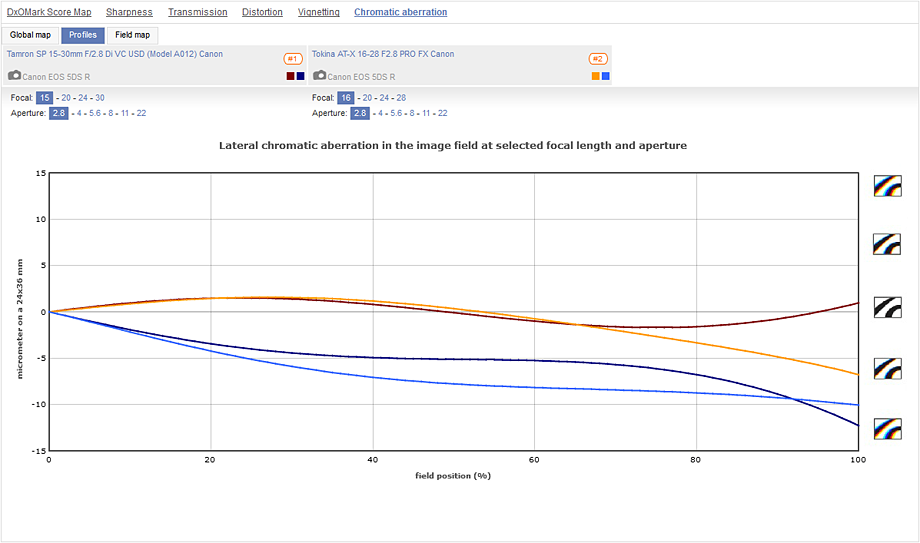
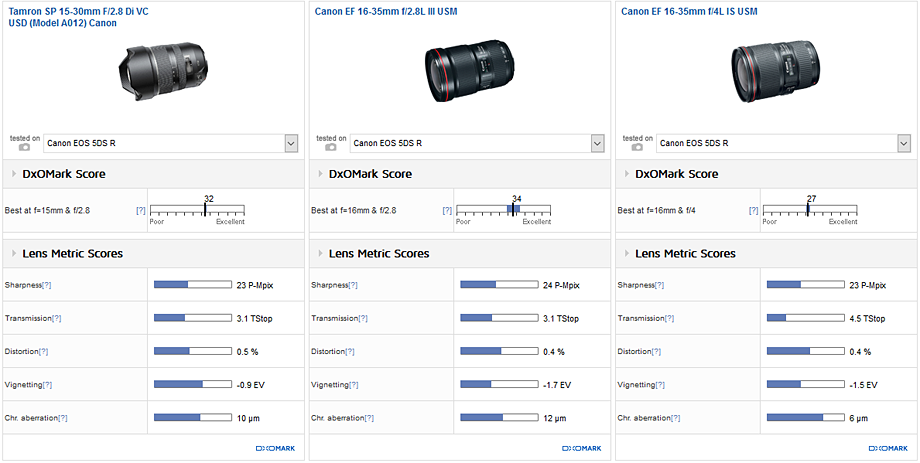
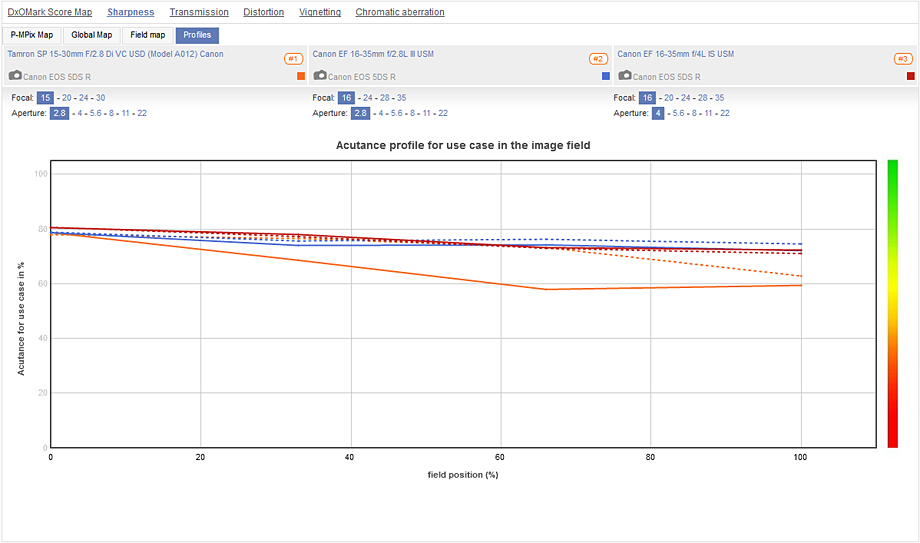
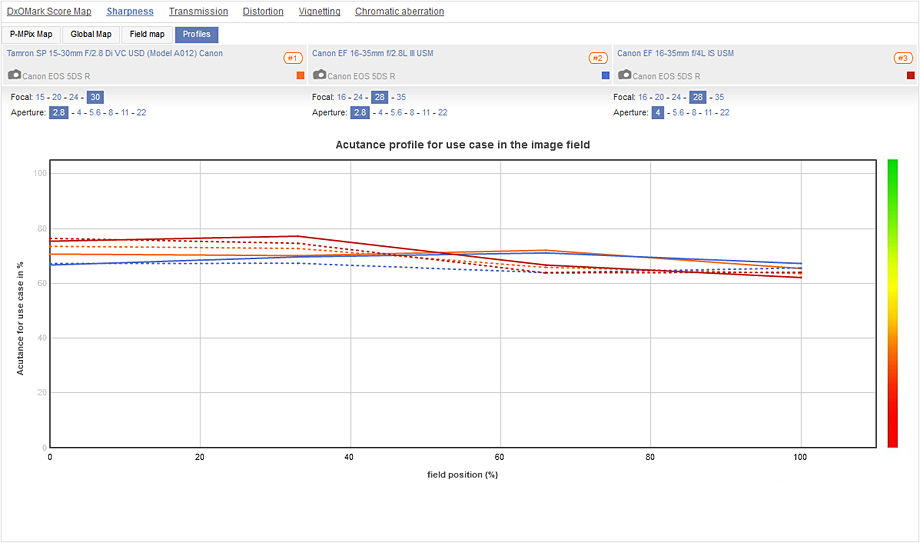
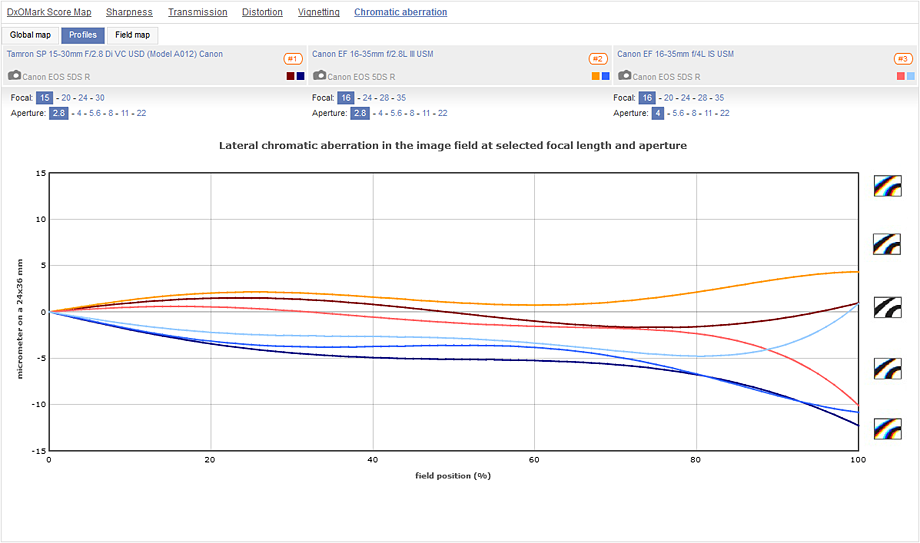
DXOMARK encourages its readers to share comments on the articles. To read or post comments, Disqus cookies are required. Change your Cookies Preferences and read more about our Comment Policy.